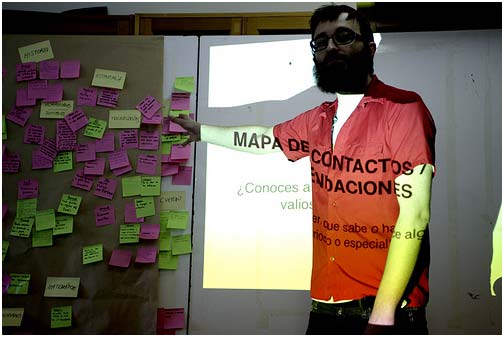© 2010 Brian Lamb and Jim Groom. The text of this article is licensed under the Creative Commons Attribution 3.0 License (http://creativecommons.org/licenses/by/3.0/).
EDUCAUSE Review, vol. 45, no. 4 (July/August 2010): 50–58

cc licensed flickr photo by another.point.in.time: http://flickr.com/photos/another_point_in_time/3577334086/
Given the space limitations imposed on us by The Man of this issue of EDUCAUSE Review, we were not really able to go into as much detail as we would have preferred, in particular about the practical elements of what open educational technology practice looks like. This short coming felt particularly acute to us when it came to our case studies, which receive only the briefest of overviews.
So we are very grateful that the subjects of our case studies have been kind enough to offer up more information on how they see their work.
- Many thanks to Luke Waltzer, Joseph Ugoretz, Matt Gold, and Scott Voth for assembling this page highlighting five exemplary uses of open-source platforms for scholarship at the City University of New York (CUNY): http://commons.gc.cuny.edu/wiki/index.php/Open_EdTech_Projects_at_CUNY
- And we are also grateful for the wealth of information written and shared by Jon Beasley-Murray at The University of British Columbia, a selection of which can be found here: http://wiki.ubc.ca/Documentation:Wikipedia_As_Platform
We also cannot resist pointing to a couple artifacts highlighting open educational technology on our own campuses:
- At the University of Mary Washington, see "20 Examples from UMW Blogs", parts one and two. You can also view "10 Ways to Use UMW Blogs", an examination of the various ways the UMW community is using UMW Blogs for course sites, syndication, study abroad blogs, departmental sites, club sites, strategic plans, and increasingly for personal portfolios—just to name a few applications.
- At The University of British Columbia, Resource Management Framework (co-authored with Cindy Underhill and Novak Rogic) provides an overview of UBC's blog and wiki platforms, with special emphasis on how we intend to extend these tools to provide a rich online publishing environment.
Obviously, this is just a sampling. These examples do not begin to capture the wild diversity of what open, public service learning can mean—both in terms of technology strategy and in terms of how we think about educational practice. We hope you will share your own favorites—either by linking to them in the comments field below or, better yet, via a blog post of your own, showing the love for your open ed tech heroes! (We'd appreciate a heads-up on those in the comments field as well.)

cc licensed flickr photo by blancagc: http://flickr.com/photos/ihatepoems/3360003517/
